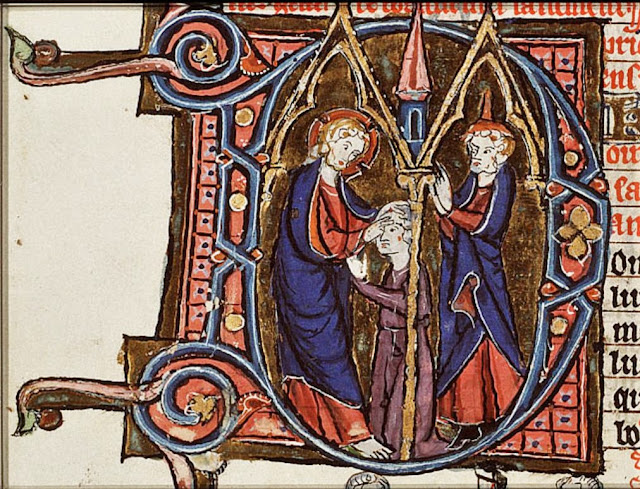The Final Bell

Two weeks ago we wrote about Septuagesima, the first week of the “gesima” Sundays and the start of the pre-Lent season. This week, we are focusing on the third Sunday of the “gesimas” called Quinquagesima, a reference to the fact that it falls fifty days before Easter.
Quinquagesima is traditionally considered to be the zenith of Gesimatide, which has earned it the nickname “Carnival Sunday.” After all, it falls at the end of the Church’s preparatory period before the beginning of Lent, which begins on the following Wednesday.
In many ways this Sunday serves as the last warning, the gentle nudge, and the ultimate countdown to the Church’s great penitential season. Some have even described Quinquagesima as a sort of final bell that tolls right before the start of the new hour. After hearing the Word spoken during this last Sunday in the pre-Lent season, it is impossible to avoid the fact that Ash Wednesday is around the corner.
Quinquagesima’s Sunday, Monday, and Tuesday fully embrace this mood, emphasizing the need for Christians to spend their time and energy cleaning their hearts and homes out for Lent. This is why it is common to think of Quinquagesima and the following days as the most decadent and lavish of Gesimatide: it is the time when the final bits of dairy, eggs, fats, sugars, and meats are consumed and the pantries are emptied—a time when Christians feverishly and fervently try to get everything in order for the greatest fast of the liturgical year.
We mentioned in our post for Septuagesima that the Sundays of Gesimatide align neatly with the three Reformation solas. This Sunday marks the sola fide Sunday of the “gesimas,” focusing in on the Gospel lesson that features Jesus’ healing of a blind man (Luke 18:31-43). In this lesson we hear that our salvation comes by faith alone. We join with the blind man and pray that our own eyes would be opened just as Christ opened his, so that we might be able to view our Savior. In this way, Christ’s action in the Gospel lesson on Quinquagesima opens our eyes just in time to see the heaviness, joy, and mystery of Lent, Holy Week, and Easter standing before us.

A Brief History
The celebration of Quinquagesima stretches far back into the Church’s history. That is why many of the traditions that we associate with the final days of pre-Lent are particularly historic, having been established long ago as a central part of the Church’s preparation for Lent.
The distinctive days within the week of Quinquagesima are also long-established, with Quinquagesima’s Monday and Tuesday known as Shrove (Collop) Monday and Shrove (Fat) Tuesday, respectively.
In the Scandinavian Lutheran tradition, it is customary for congregations to consume fastelavnsboller together after the Sunday service and then to go home and begin cooking and baking for the Monday and Tuesday celebrations.

Collect
O Lord, mercifully hear our prayers and having set us free from the bonds of our sins deliver us from every evil; through Jesus Christ, Your Son, our Lord, who lives and reigns with You and the Holy Spirit, one God, now and forever.
Lessons
Resources
Quinquagesima pork recipe
Issues, Etc. interview with the Rev. David Petersen on Quinquagesima
Propers found in Daily Divine Service Book: A Lutheran Daily Missal, edited by the Rev. Heath Curtis
References:
1. Parsch, Pius. The Church’s Year of Grace: Septuagesima to Holy Saturday. The Liturgical Press. 1964.
2. Lindemann, the Rev. Fred H. The Sermon and The Propers, Volume II: Pre-Lent to Pentecost. Concordia Publishing House. 1958.
Images:
1. Healing of the Blind Man, Jacob Corneliszoon van Oostsanen after Albrecht Altdorfer, The Netherlands, c. 1520-1521.
2. Jesus Heals the Man Born Blind, from a Book of Hours, Belgium, c. 1250-1300.
3. The Miracle of Christ Healing the Man Born Blind, Giovanni Domenico Tiepolo, Italy, 1752.





[…] as we touched on in our post for Quinquagesima, the three days before Ash Wednesday have historically been the high point of the Carnival […]